Menus
- Concept comparison
- It all starts with the BMW R 1200 R.
- How is the Ducati Monster 1200 doing?
- Kawasaki Z 900 relies on 125 hp four-cylinder
- The KTM 790 Duke invites you to play
- Last but not least: Triumph Speed Triple S.
- Conclusion
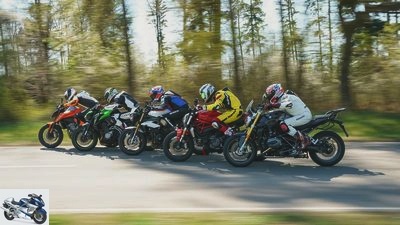
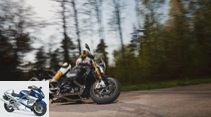
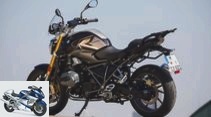
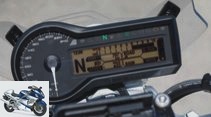
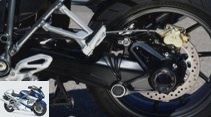
28 photos
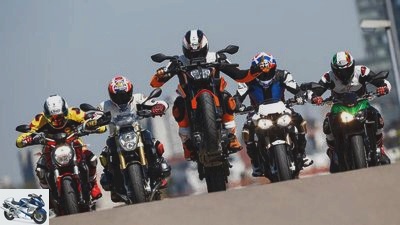
1/28
BMW R 1200 R, Ducati Monster 1200, Kawasaki Z 900, KTM 790 Duke and Triumph Speed triple 1050 S in a comparison test.
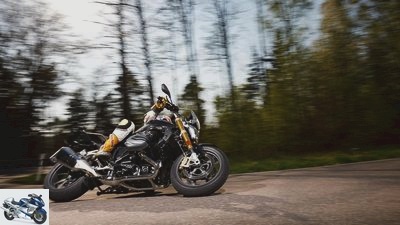
2/28
BMW R 1200 R..

3/28
The basic price of the BMW is 13,100 euros. However, 16,465 euros have to be put on the counter for the test machine.
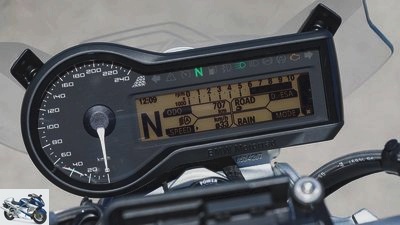
4/28
In the round instrument on the left the speed, on the right in the LCD display the speed. It would be better the other way around.
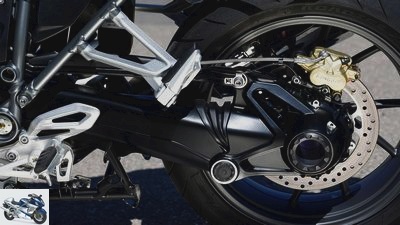
5/28
With a sporty pace, for example when braking hard at an incline at the entrance to the curve, disturbing load peaks occur in the cardan that tug at the rear wheel.
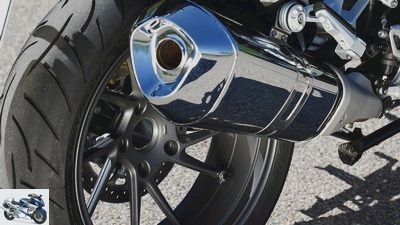
6/28
Unfortunately, the voluminous pot hides the chic single-sided swing arm.
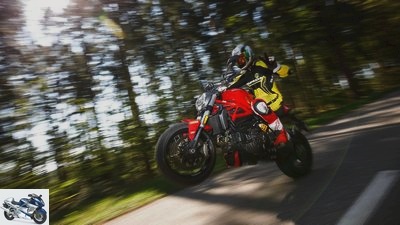
7/28
Ducati Monster 1200.
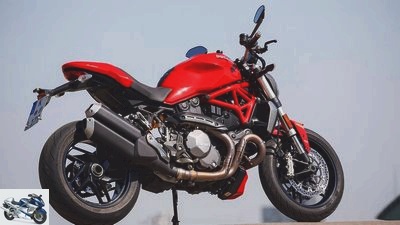
8/28
For the Duc at least 14,390 euros are due.
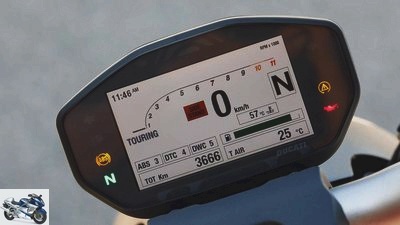
9/28
All information at a glance: the dashboard is easy to read and quite clear.
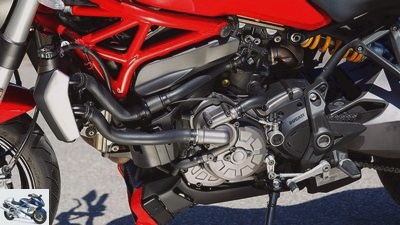
10/28
Not particularly nice to look at: the water-cooled engine is buried under a thick layer of plastic covers and hoses.
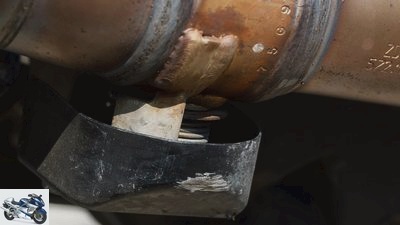
11/28
Be careful in right-hand bends: the lambda probe is a little unfortunate enough to be attached to the manifold, it may come on at an angle.
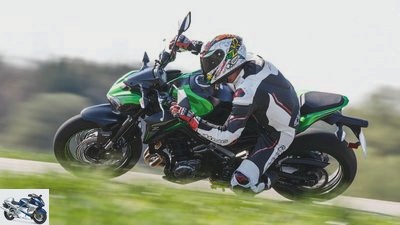
12/28
Kawasaki Z 900.

13/28
At 9,095 euros, the Kawa is the cheapest machine in the test field.
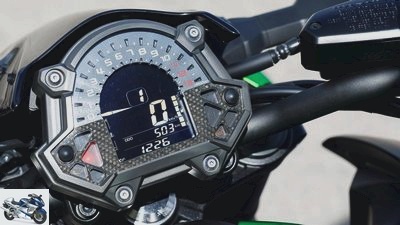
14/28
The speed is very difficult to read, but at least the gear step is displayed prominently in the middle.
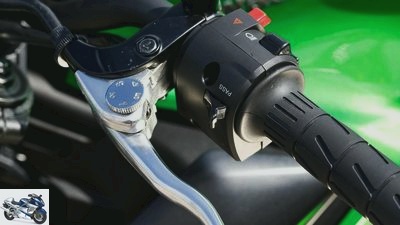
15/28
The smooth-running clutch is almost reminiscent of motocross, as it hardly requires any manual force. The hand lever is also adjustable.

16/28
Nice gag: The Dunlops carry the special specification “Z” and harmonize perfectly with the Kawa.
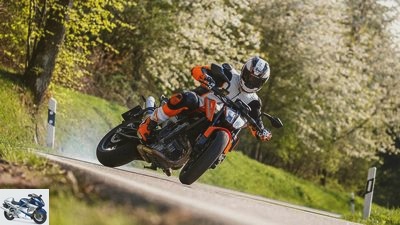
17/28
KTM 790 Duke.

18/28
At 9,790 euros, the KTM is one of the cheaper models.
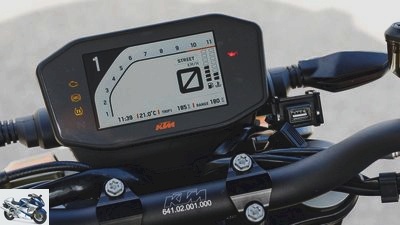
19/28
A very similar TFT display to that of the Ducati Monster, just maybe a bit tidier.
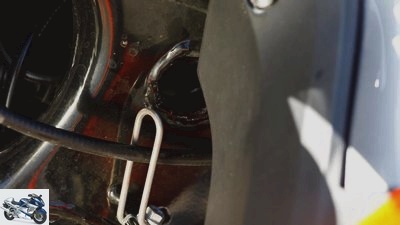
20/28
Somehow the relatively cheap price has to be put together. If you take a closer look, you will discover, for example, these unsightly welds in the area of the steering head bearing.

21/28
Smart shape of the rear silencer, which, by the way, is of high quality.

22/28
Triumph Speed Triple 1050 S..

23/28
The Speed Triple S is available for 13,750 euros.

24/28
Easily readable TFT display with a well thought-out menu navigation concept.
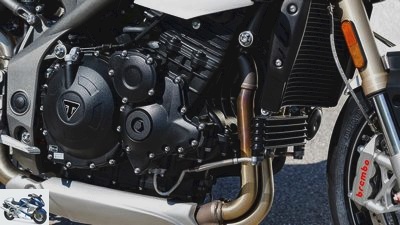
25/28
A revision of the drive that is impressive. Triumph has once again tickled everything that is possible out of the “old bone”.
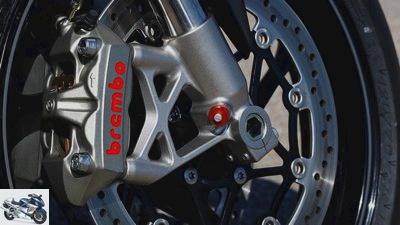
26/28
The individual components don’t just look like they are plugged together, they are well coordinated. The brake and fork work properly.
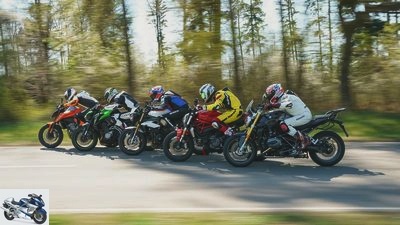
27/28
Black Forest earthquake region: Thirteen cylinders, distributed across five very different motorcycles, starting their own beat!
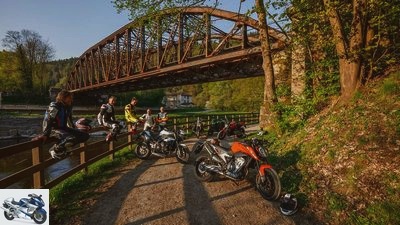
28/28
Nerd genes: If the Speed Triple were a school child, she would probably have only a few friends – or rather a lot?!
5 naked bikes in a comparison test
Concept comparison
Content of
13 cylinders spread across five wild naked bikes enter the house route. Which engine concepts define the top of the highway pecking order? And where do the brand new KTM 790 Duke and the Triumph Speed Triple S fit in in the field?
NEulich in the completely overcrowded tram on the way to the editorial office: everyone is staring around bored. The mood is happier at every funeral. What feels like an eternity later, the train leaves the dark tunnel towards the city center and is immersed in the glistening light of early summer. Relieved sighs of relief for all passengers, as if an oppressive burden had been removed. The trees are already covered in leaves and the meadows are finally green. A man in an advanced semester gets to the heart of the turnaround. He bends conspiratorially towards his wife, looks her in the eye and mischievously whispers: “I really want to ride a moped.” When the PS test delegation leaves the editorial underground car park a little later, the unknown brother’s words still echo in their minds gently under the helmet.
Buy complete article
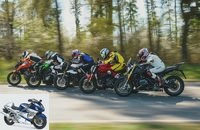
5 naked bikes in a comparison test
Concept comparison
Not that much in common
He would certainly not have said no to a road trip with one of the five test machines of Italian, German, Austrian, English or Japanese origin. Three of the five motorcycles have two-cylinder as the centerpiece, but in the different expansion stages V2, boxer and parallel twin. A three-cylinder and a classic four-cylinder complete the imposing squadron. The first extensive Black Forest tour of the year will now reveal which drive sets the tone. There are few real similarities between the machines. Only the handlebars between 720 and 760 millimeters wide create a feature that is repeated in each of the five uncovered ones. As befits this type of motorcycle, the pilot’s upper body always hangs freely in the wind.
It all starts with the BMW R 1200 R.
Only the BMW R 1200 R provides a touch of wind protection. But the rider sits deeper in the motorcycle than with any of the other naked bikes. The arms rest casually almost stretched out in front of the handlebars. A culture shock for every sports driver! The comfort-oriented seating position makes it difficult to keep up with the four other machines when the lean angles get sportily deep. Soon the tips of your boots are dragging across the asphalt. Only those who hang-off excessively can avoid material losses on the footwear. Until shortly before this point, however, the 243 kilogram BMW does well. The mighty roadster steers effortlessly, maintains the line neatly and remains steadfastly on course in an inclined position as long as the ESA electronic chassis is set to “Dynamic”. However, the BMW tells its driver little about the grip of the asphalt. Although the tires (first Metzeler Z8 Interact tires) can barely have built up temperature and grip immediately after driving off, the R 1200 R is required to tilt at an early stage because the machine barely shows any signs of resistance – it seems to be working. But it would be even better if the driver received direct feedback and the BMW didn’t leave him in the dark. On the Bavarian, you practically float above the road and feel a little disconnected from the motorcycle.
The basic price of the BMW is 13,100 euros. For the test machine, however, 16,465 euros have to be put on the counter.
Even if later than expected, the sport will eventually be full. This manifests itself, for example, in load peaks in the cardan shaft, which pulls the rear wheel with a jolt when braking late at the entrance to a curve by downshifting hard. Even the well-functioning slipper clutch does not prevent this. The R 1200 R also gets into trouble when shooting over rough roads on narrow roads. When things get too wild, ABS and traction control get out of step. Suddenly the ABS regulates in an unintentional place or the traction control slows down despite the shower being open because the algorithms in the sensor box are overturning. Back on level ground, the BMW feels good again and hums its burly, deep boxer melody out into the Black Forest world. The engine pushes hard from low revs and grabs violently with its bearish and early torque. The 125 hp boxer is not particularly easy turning, but it pulls through up to around 7,500 rpm with the same vehemence. In addition, the class-coordinated engine responds finely to gas commands free of load change reactions.
How is the Ducati Monster 1200 doing?
The Ducati Monster 1200 brings a breath of fresh air into the game with its 90-degree V2 and measured 145 hp. In no other machine does the engine push itself so much into the foreground of the driving impressions. Almost like an old American V8 sled, it is mainly the drive that ensures that the ride on the Ducati remains in the memory for a long time. Even when standing still, the monsters rattle and rumble lively. Just like the transmission, the clutch requires power when actuated. With a noisy click, first gear engages and the V2 stomps forward. At around 4,000 rpm, it doesn’t push as hard as the BMW, but it turns much higher. The Bolognese twin really comes to life between 7,000 and 9,000 rpm and pushes the monsters forward with steam. However, it does not implement throttle commands quite as gently (our tip: touring mode with engine at high level) as the boxer, but engine performance and characteristics create a coherent overall picture and match the muscular machine.
The Ducati Monster 1200 costs at least 14,390 euros.
The Duc hardly conveys serenity. The driver should know and master the hot drive as well as the chassis, because the monsters seldom muster real sovereignty. Despite the proper tires (Pirelli Diablo Rosso Corsa III), it tends to tip far towards the inside of the curve after the first steering impulse and looks nervous around the steering head. Be careful in right-hand bends: the lambda probe on the manifold makes contact with the asphalt at a low angle and paddles across the ground. In combination with the not very sporty seating position, the monsters’ accuracy also suffers and demands the driver’s concentration. On uneven surfaces, the front wheel tends to follow ruts and waves in the asphalt. After we close the rebound and compression damping of the fork further, the front is dampened very tightly, but the Duc behaves more true to the line. She also receives criticism for the controllability of the brakes: when the brakes are applied, the stoppers hardly respond and then suddenly decelerate sharply. The Duc only tolerates a real fan in its saddle. The Monster 1200 thinks little of a fine appearance à la “Everybodys Darling”.
Kawasaki Z 900 relies on 125 hp four-cylinder
A Japanese raptor straddles between the two beefy two-cylinders from Bavaria and Bologna with a wild banzai battle cry! The Kawasaki Z 900 relies on a nominally 125 hp four-cylinder with a displacement of 948 cubic centimeters, which runs a bit rough and takes the gas with a slight jolt from overrun. On the other hand, the engine shows high elasticity, delivers its power nicely linearly with a steady increase in torque and feels lively in the upper speed range. In other words: the Z 900, which is easy to control on the engine side, puts you in a good mood!
The purchase price of the Kawa is a comparatively inexpensive 9,000 euros.
That’s a good thing, because in order to keep up with the more powerful machines, the quadruplet has to be squeezed out. Unfortunately, despite the great performance, the Kawa falls a little behind in the points evaluation in the engine chapter, as it takes a zero in the traction control category – you won’t find a TC with it. Of course, the Z 900 looks a lot more wiry than the two 1200s from BMW and Ducati. A lightness that is reflected in the driving behavior. Handy and fast, the Kawa cuts into and through the curves. With the Dunlop D214 in special specification “Z”, it also provides a fine feel for the front wheel in tight bends. It’s just a shame that the footpegs are a tad too low and therefore touch down early. Although the spring elements of the Kawa are kept technically simple and the fork and shock absorber only offer adjustable rebound damping, the Z 900 drives in a cleanly balanced manner, the chassis works well. On the shock absorber, the damping should still be closed up to one turn in order to keep the rear calm when accelerating out. But one thing should not be overlooked: At a purchase price of just over 9,000 euros, the Kawa offers a lot of uncomplicated driving fun for a comparatively small amount of money.
The KTM 790 Duke invites you to play
The next machine in the field is called the KTM 790 Duke. Your series-connected 105 hp two-cylinder with a displacement of almost 800 cubic centimeters and a crank pin offset of 75 degrees celebrates its premiere as a completely new design. The drive sounds very similar to one of the larger V2 engines from Austria, and the 790 is (still) produced in Mattighofen. In any case, the KTM thuds in a low pitch and starts a high-frequency V2 beat, but acts much quieter than the Ducati. Thanks to two balance shafts, the engine runs smoothly, but some slight vibrations penetrate the driver in the area of the tank panel and the seat cushion. The engine is less suitable as a silky smooth companion through everyday life, as much was already recognizable in the morning through city traffic. The twin produces constant speed jolts at low speed and steady throttle and responds abruptly in almost any of the selectable driving modes (Street, Road, Sport, Track). On the country road, however, the lively drive exudes a lot of esprit! It reacts super-spontaneously to gas commands and gently accelerates again at higher speeds. Between 5,000 and 7,000 tours, the twin serves up a nice torque plateau and then proves to be motivated and easy to turn up to just over 9,000 rpm: a sportsman through and through!
At 9,790 euros, the KTM 790 Duke is one of the cheaper models in the test.
On the Duke it is easier to keep up with the more powerful motorcycles in the test field than on the Kawa Z 900. In addition, the KTM brakes impress with their stable deceleration and good controllability. Despite the moderately appealing spring elements, the heavy R 1200 R turns a long nose in a beet field. With a total weight of just 187 kilograms when fully fueled, the 790 feels almost like a supermoto and is extremely easy to steer back and forth. The driver of the Duke always has a rogue in the neck. Perhaps that is why the standard Maxxis rear tire will soon lose tread depth. Be careful when driving in! At the beginning, the tire has a greasy and slippery layer on the surface. Sure, the Maxxis initial tires are part of the Duke’s tight price calculation, because the machine is comparatively cheap for a KTM at 9,790 euros. Nevertheless, the rubbers, brought to operating temperature, adhere very well to dry roads.
The mentioned, non-adjustable spring elements of the KTM represent a concession to the price. In places the shock strut tramples and the fork stuck. Anyone who expects silky cushioning qualities will be disappointed. From this point of view, the 790s are more of a “close your eyes and go through” type. And yet, a complete electronics package made up of all imaginable assistance systems (nine-stage traction control, wheelie control, racing starting aid, engine drag torque control, ABS with Supermoto mode and cornering function, automatic gearshift with blipper) is only offered by the KTM in this test field. All assistance systems work excellently, only the automatic gearshift should have slightly shorter interruption times for our taste.
Last but not least: Triumph Speed Triple S.
In the end, there is the newly redesigned Triumph Speed Triple S. Of course, the iron from Hinckley also comes with an electronics package with traction control plus various driving modes and even has cruise control as standard. In addition, the dashboard shines with a wealth of information and has several levels for different presentation of the information. The Speed Triple S lacks an automatic gearshift as well as the other machines (except for the KTM). A fact that brings us straight to the advantages of the new Speedy. The transmission shifts so smoothly and precisely that Triumph has never seen before. A real pleasure to step up and down the gears through the switch box! In addition, the cultivated three-cylinder follows the gas commands directly, but politely. Even in sport mode (most direct response), the Speedy cruises through town at low speed without twitching when opening the gas. And when the signs behind the place-name sign say Storm, the triplet is there immediately.
The Triuimph Speed Triple S is available for 13,750 euros.
The Triumph responds almost as spontaneously as the KTM, but ignites much more powerfully from the corners due to its voluminous displacement at lower engine speeds. Even the older Speedy models fired with flavors from the bend, but the new bike also has an unprecedented level of revving pleasure. The revised Speedy turns a good 1000 rpm, the engine feels light and lively. In addition to the fine tuning, the Triple delivers the highest peak performance of the quintet. Even the powerful Monster 1200 cannot stand up to this! With a measured 154 PS, the Triumph stands perfectly in the forage and remains untouchable for the competition over the entire speed range. Fine tuning, great performance plus electrifying triple sound: the Speedy has done its homework! Speaking of sound: In the course of the facelift, even the primary drive was revised and the howling at idle speed was eliminated.
In terms of handling, the Triumph continues to collect points, although the basic damping of the fork is quite tight and that of the shock absorber is rather soft. Therefore we turn the compression damping on the shock absorber up to one turn, so it no longer has a lot of reserves ready. With this set-up, the Triumph drives corner-stable and handy, behaves nicely neutral and wonderfully accurate. The chassis creates a high level of transparency and the Triumph delivers great feedback from the front wheel, for which the sporty, active seating position is certainly responsible. When it comes to driver assistance, it is noticeable that traction control and ABS in sport mode can sometimes release a little more slip or regulate it later. When accelerating out of the corner and on rough roads, the electronics sometimes take away a lot of power. The same applies to the ABS, which regulates early in a sporty driving style. If you can or want to do without it, deactivate the systems. Or buy the better equipped sister model Speed Triple RS, which comes with a sharper track driving mode as standard. The creamy triple drive would remain the same in any case, which would clarify the question of the country road pecking order on the chassis and engine side.
Conclusion
1. Triumph Speed Triple 1050 S.
The Speed Triple S confidently takes the test victory by points. Your revised engine doesn’t lack power or manners. Power, smoothness and responsiveness – everything just fits together.
Nerd genes: If the Speed Triple were a school child, she would probably have only a few friends – or rather a lot?!
2. KTM 790 Duke
It will be interesting to see what KTM will come up with with the new two-cylinder in the future. His sporty genes come into their own in a light naked bike like the new Duke and will delight full throttle fans.
3. BMW R 1200 R
Watch out when the BMW appears in the rearview mirror. At some point it will be slowed down by its massive form, but you shouldn’t be fooled. The roadster goes around the corner much faster than you would think it would. The boxer’s vote is a poem!
4. Ducati Monster 1200
A fascinating rough leg with a lot of engine, but taming it requires a lot of dedication. The monster wants to be dominated and tackled with a firm hand so that it follows. Tiring in the long run and therefore not for everyone.
5. Kawasaki Z 900
In terms of points, the Kawa only made fifth place, as it lags behind the competition in terms of equipment. Beyond the points evaluation, however, the Z 900 drives great and offers a lot of driving fun for the money. But the four-cylinder lacks a bit of fine-tuning and fascination compared with the other engine concepts. Compared to the Triple or V2, its entertainment value is lower.
Related articles
-
2017 travel enduros from BMW, Ducati, Honda, KTM and Triumph in a comparison test
Rivas 50 pictures Rivas 1/50 2017 travel enduros in a comparison test. Rivas 2/50 BMW, Ducati, Honda, KTM and Triumph in the fight for the rule of …
-
BMW, Kawasaki, Triumph and Yamaha Tourer in comparison test
Gargolov 31 pictures Gargolov 1/31 Tourer comparison test: Triumph Trophy SE, BMW R 1200 RT, BMW K 1600 GT, Yamaha FJR 1300 and Kawasaki 1400 GT. Gargolov …
-
BMW R 1200 R and Ducati Monster 1200 in a comparison test
Gargolov 30 pictures Gargolov 1/30 Ducati Monster 1200 and BMW R 1200 R. Gargolov 2/30 … modern headlights, … Gargolov 3/30 Ducati Monster 1200 and …
-
7 power naked bikes in a comparison test
Gargolov 54 pictures Gargolov 1/54 Power-Naked-Bikes. That sounds like purism, like motorcycles that don’t have more than necessary. Gargolov 2/54 The …
-
The naked bikes of the Alpine Masters 2012 in comparison
Jahn 16 pictures Jahn 1/16 KTM 990 Super Duke R: The Duke only has to admit defeat to triumph. Turning in, folding down and straightening up goes with …
-
Comparative test of power naked bikes, part 1
www.r-photography.info 32 pictures 1/32 With the 172 hp V4 engine, the Tuono is the face in the crowd. Their displacement was …
-
39 pictures 1/39 The Triumph Speed Triple: The price 11,740 euros (the test motorcycle with windshield for 245 euros and …
-
Comparison test of mid-range naked bikes over 100 hp
31 pictures 1/31 Yamaha MT-09 SP, Kawasaki Z 900, Triumph Street Triple R, KTM 790 Duke, Ducati Monster 821 and Suzuki GSX-S 750 …
-
Comparison test Cagiva Raptor against Ducati Monster M 900 against Triumph Speed Triple
Comparison test Cagiva Raptor against Ducati Monster M 900 against Triumph Speed Triple Die Flitzer Flitzer: They are naked, run quickly around, show …
-
35 pictures 1/35 BMW S 1000 R, Ducati Monster 1200 S, KTM 1290 Super Duke R and Triumph Speed Triple R in comparison …